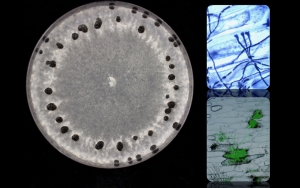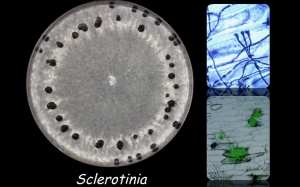(2 de outubro de 2018, 16:00hrs) Prof. Jeffrey A. Rollins. (Department of Plant Pathology, University of Florida, Gainesville, FL, USA). Sclerotinia sclerotiorum is a notorious phytopathogenic fungus with a broad host range that includes many important vegetable and row crops. Several sources of independent experimental evidence have now demonstrated that oxalic acid (OA) production and accumulation is required for S. sclerotiorum to fully colonize and produce the typical macerating and spreading symptoms in the majority of its hosts. Our recent focus has turned to understanding how the early phase of infection occurs. We hypothesize that limited lesions observed during infection of hosts by oxalic acid minus mutants (oah1–) are able to establish a basic compatibility with their hosts but are unable to transition to the OA-dependent colonization phase of compatibility. To begin testing this hypothesis we are comparing transcriptome expression profiles from the wild type and oah1– mutants during pre-penetration, penetration, and colonization stages of disease development. Analysis of transcript accumulation profiles using clustering algorithms has provided support for the hypothesis that the wild type has at least two distinct phases for the infection and colonization of host plants. Comparative transcript profiling with the OA-minus mutant supports the observations based on symptom development that these mutants are unable to transition from a primary compatibility phase to a secondary colonization phase of disease development. This two-phase model of S. sclerotiorum necrotrophic pathogenicity will be discussed and current approaches to experimentally testing this model will be presented.


